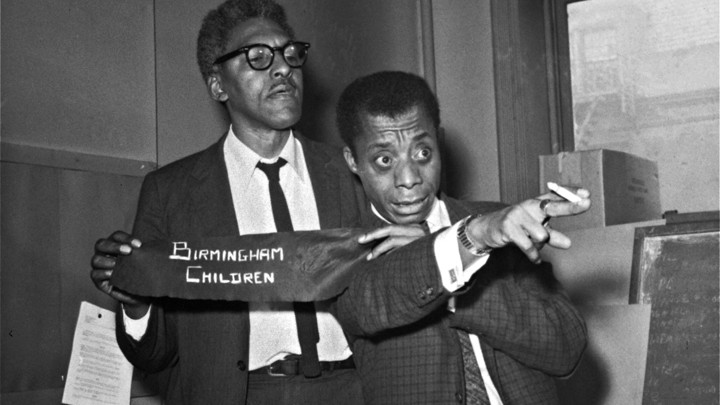Ariel Gilreath offers a strong overview in her Greenville desegregation: Academic achievement gap slowly closing, but inequities persist. A key point in this look at desegregation confronts the disturbing consequences of South Carolina’s libertarian streak:
The public school district in Greenville County became the last major district in South Carolina to integrate in 1970. South Carolina was the second-to-last state in the nation. On Feb. 17, Greenville schools will mark 50 years since the district was integrated.
In those 50 years, though policies and tests have changed, the academic achievement gap has persisted, and so has inequity.
Desegregation of schools in SC spurred the growth of private schools (white racists fleeing public schools) and provided the foundation for what would become known as the Corridor of Shame, a label that captures the historical political negligence in the state that has failed black, brown, and poor students in weak economic communities across the state.
Academic achievement, usually test scores, is strongly correlated with socioeconomic statuses of students homes and communities as well as with race (as the article notes, so-called racial minorities tend to be over-represented in poverty, and poverty is a key marker of low test scores).
Three aspects of the article deserve a bit of clarification and resources for better understanding them.
First, a growing number of scholars and advocates for public schools are rejecting the term “achievement gap” (a foundational concepts in No Child Left Behind), as Gilreath reports:
Paul Thomas bristles when he hears “academic achievement gap.” The education professor at Furman University doesn’t like the connotation, and he’s not alone.
“It’s an equity gap,” Thomas said. “Children are not given the same opportunities. They’re not given the same resources, either in their lives or in their schools. So the outcomes are inequitable because the input is inequitable — not because the children are different.”
By focusing on equity and opportunity, the gaze of blame moves away from the student (the agent of achievement) and toward the systemic forces that create the inequity of academic outcomes for students.
[See: School Rankings as Racist, Classist Propaganda; The Lingering, and Powerful, Legacy of “Scientific Racism” in America; Kristof, How Much Inequity Is the Right Balance?; Achievement Gap Misnomer for Equity Gap, pt. 1; Achievement Gap Misnomer for Equity Gap, pt. 2]
And thus, we must not be mislead by Teach for America’s effort to rebrand the floundering organization:
Teach for America, a nonprofit organization that funds additional educators for low-income schools, refers to the achievement gap as an “opportunity gap” to describe the different test outcomes between subgroups of students.
One of the greatest mechanisms of inequity by race and socioeconomic status in the U.S. is teacher assignment: Poor, black, and brown students; English language learners; and students with special needs are disproportionately assigned year after year to under-/un-certified and inexperienced teachers—the exact teaching pool TFA is offering to those populations of students.
[See: Listen to Gary Rubinstein: “TFA…thrives on greed, deception, and fear”; REVIEW: Teach For America and the Struggle for Urban School Reform, Crawford-Garrett; Teacher Quality: On Hyperbole and Anecdotes]
Second, along with rejecting the term “achievement gap” for “equity” or “opportunity gap,” we must avoid both deficit ideology and deficit language when referring to students who are the targets of that inequity:
Students in poverty are ‘at a deficit from the beginning’
Schools alone cannot fix poverty or issues at a student’s home, said Jason McCreary, director of accountability and quality assurance with Greenville County Schools….
But schools do serve as a central hub and identifier of the issues that typically trail a student living in poverty. If a student comes into a classroom hungry or dealing with trauma, it’s often reflected in behavior and performance, and schools are expected to identify those issues and address them.
While the points here about the power of systemic inequity in the lives of students outside of school and the inability of school alone to overcome those forces is important and well supported by research, it places the focus on the students to describe those conditions as “deficits.”
Differences should not be framed in evaluative ways, and certainly we should avoid putting the deficit gaze on the students themselves.
[See: Quitting Grit, Ditching Deficit Ideology, and Embracing an Equity and Justice Approach to Poverty and Education: A Conversation; From Deficiency to Strength: Shifting the Mindset about Education Inequality; Poverty and the ideological imperative: a call to unhook from deficit and grit ideology and to strive for structural ideology in teacher education]
Finally, but more about language and ideology, we must be careful about “culture”:
“There’s cultural gaps, opportunity gaps, community gaps, economic gaps, access gaps — it all leads to achievement gaps. So that’s why this is one of the most complex issues that I know,” McCreary said. “So it takes complex solutions to really make a dent, make a change.”
Most sociologists would caution against overly simplistic uses of the term “culture,” but to suggest there are “cultural gaps” is again to blame not only the students but their communities and families for the systemic inequities that are reflected in their academic outcomes.
To suggest there is a cultural gap is to privilege whiteness as an unspoken and unacknowledged “norm” against which all other races are measured; this at its roots is racism and the driving force behind white nationalism.
As I note in the article, desegregating schools is the ethical process for a democracy, but the proximity of all students of many different races is not enough.
Our language must change, as noted above, but until our policies and behaviors change, the rhetorical shifts will be hollow gestures.





